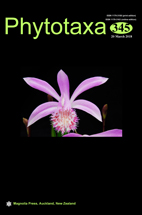Abstract
Field collections of Agaricus were collected in the Dominican Republic from 2009–2016 with the intent to evaluate the diversity in this genus, which was quasi-unknown in this country. In the same period, studies on tropical Agaricus revealed tropical clades that remained unclassified. A new taxonomic system of classification was developed, with the aim, inter alia, to integrate such tropical clades. A recent phylogenetic study, which included some samples from the Dominican Republic, revealed they belonged to three putative new sections. Our objective in this paper is to describe the species of Agaricus collected in this country and to classify them whitin the new taxonomic system, including formal descriptions of the three new sections to which they belong. A preliminary study indicated that the collections of the Dominican Republic belong either to a group of three related subgenera (Flavoagaricus, Minores, and Minoriopsis) or to the unrelated A. subg. Pseudochitonia. For the species of the three related subgenera, a phylogenetic analysis based on ITS sequences data reliably confirmed the classification of the species into five sections including the three new sections, which were well supported. For the collections of A. subg. Pseudochitonia, preliminary studies indicated that they all belonged to species of A. sect. Xanthodermatei without any doubt except for one species. This species was included in a multi-gene (ITS, LSU and tef-1α) phylogenetic analysis which confirmed placement in this section. Consequently, all the samples were included in a phylogenetic analysis based on ITS sequences and focusing on A. sect. Xanthodermatei. We noted an unusually high intraspecific variability in the ITS sequences of five of the 12 studied species. Fifteen taxa are described, among which three sections and six species are new for science: Agaricus sect. Kerrigania, Agaricus sect. Minoriopsis, Agaricus sect. Pantropicales, A. argenteopurpureus, A. candussoi, A. flavidodiscus, A. lodgeae, A. porphyropos and A. tephrolepidus. We report all these taxa from the Dominican Republic but the latter three species are also recorded from Puerto Rico, United States Virgin Islands, and Mexico, respectively.

